My name is Dave May and I’m a Sydney based Cinematographer/Director with a small production company called Tall Story Films. A good chunk of work has been as a cinematographer or cinematographer/director on factual television series here in Australia, shows like Employable Me or Filthy Rich and Homeless, which are typically observational documentaries with a social impact message and are screened on the ABC (our version of the BBC).
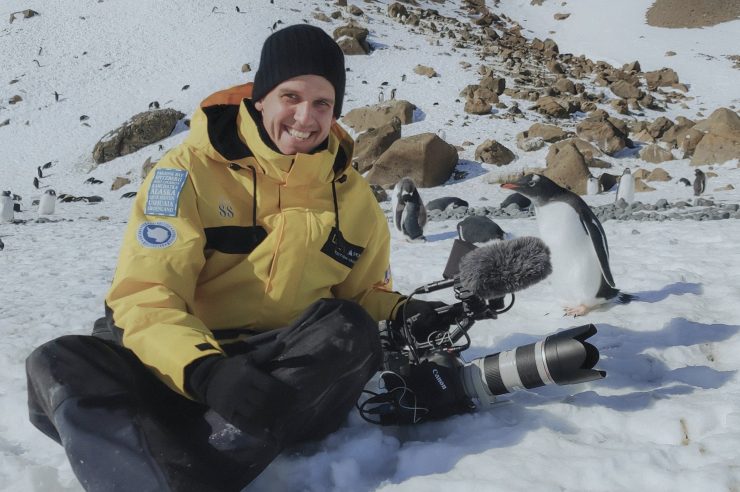
Over the past year or so I’ve started working with some great collaborators and that has allowed Tall Story Films to make a few projects in house, the most recent of which is Uncover Antarctica for National Geographic and the phone company Oppo. The idea was to put Oppo’s latest smartphone in the hands of a National Geographic photographer Michaela Skovranova to see how she would use the device to document her journey to the continent. Michaela would create a piece filmed entirely on the phone, while I would create the below mini-documentary around her trip as well as create a series of feature-specific videos. There was a lengthy list of deliverables to consider as the final product would be repurposed to go everywhere from Youtube pre-roll ads to broadcast TV.
It was late Feb when we headed off (COVID-19 was just starting to march across the world) and working within a limited budget and tight timeframe meant it was just myself and Michaela on the shoot. This also meant we didn’t want to be lugging around more bags than we could manage so I had to be sure that the equipment I was bringing would do the job and stand up to the environmental conditions.
I had recently bought the Canon C500 MKII and this was a great chance to put it through its paces, but I was a bit worried about possibly destroying my new baby trying to showcase the harsh environment. It was also really important that a useable camera kit traveled with my carry on in case any of the other bags didn’t make it. We were going to be on one of the last expedition ships making the trip down to Antarctica before the end of the season so no matter what happened we were going to be boarding our connecting flight to Ushuaia, Argentina, and then jumping on that boat.
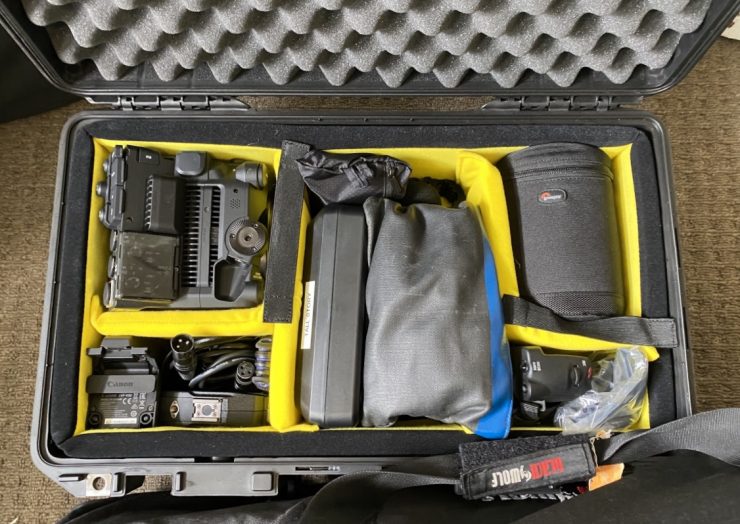
I ended up squeezing the C500MKII, a lens, battery, and card reader into a Pelican 1535 so that if it came to it we’d still be able to film, while the rest of the camera equipment and lenses went into the larger checked 1615.
If you’re ever traveling internationally with a few smaller bags and want to keep your checked total low, invest in a gigantic duffle bag. My clothes bag, tripod bag, cinesaddle, and other extra bits and pieces all ended up in one, and while it was a monster, it was much easier to keep track of one big bag than several smaller ones. It’s also worth noting that if you’re traveling with an IAATO operator in Antarctica commercial drone filming is now banned, so the drone stayed at home.
CODEC & PROFILE
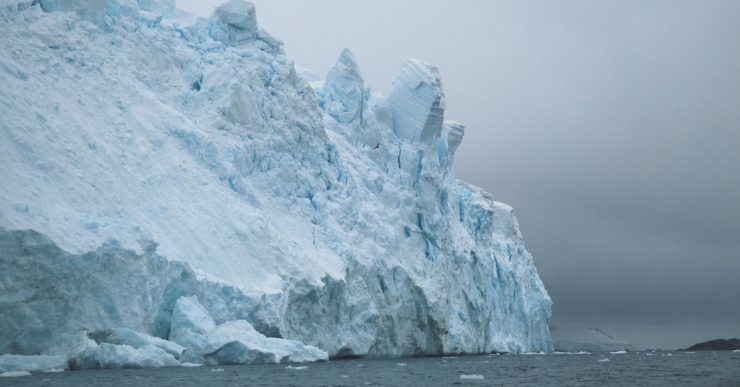
After testing the camera’s 4K 10bit XF-AVC codec and the Canon raw light codec I ended up settling on the 4K 10bit XFAVC. I would have loved to shoot raw as the 6K full-frame 12-bit codec is pretty amazing, but I knew that the documentary feel of the project would mean a lot of rolling and file sizes would quickly become unmanageable. It’s also pretty great that the 10bit XF-AVC codec is so solid itself, with great noise performance and a fantastic dynamic range when shooting in Canon Log 2. Previously Canon Log 3 had been my go-to as Clog2 could just get a bit noisy in the shadows, but Canon seems to have sorted this out with the C500MKII and C300MKIII. Matt Porowell has done some great testing in this regard so I’d recommend his blog to anyone working with these cameras.
I also really enjoy the slightly wider aspect of DCI 4K (4096×2160) and think it’s a great resolution to capture in as you can very easily chop off the sides to have 3840×2160 if standard 16×9 is required for any of the edits.
LENSES
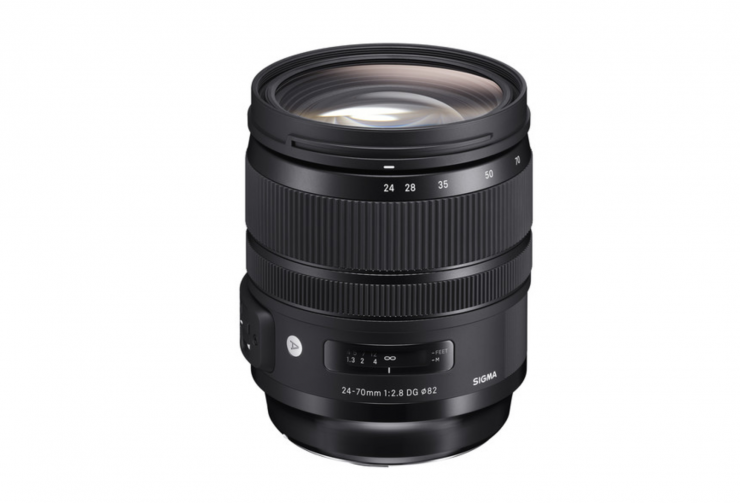
As most of my shooting prior to owning the C500MKII had been on Super 35mm sensors I had to go back to the drawing board a bit to come up with a full-frame lens selection that would give me the flexibility I’m used to. I ended up deciding on the following lenses:
- Sigma Art 24-70 F2.8 OS
- Canon 85mm F1.4 IS
- Canon 70-200 F2.8 IS (with 2 x extender)
I also brought along a Canon 16-35mm F/2.8 for the occasional super wide if needed and a Canon 24-70 F2.8 as a backup in case the Sigma went into the drink. The Sigma 24-70 Art is a bit of a left-field lens and when at 24mm on full-frame it has some pretty average vignetting that requires fixing in the grade. However, I wanted to have a zoom with IS that would give me a good range and even at the 70mm end of the lens, the Sigma OS does remove a little bit of the shake. It’s not as good as Canon’s IS on the 70-200 for instance, but every bit helps, and as I love shooting handheld it’s important for me to minimize the micro shake I’m inflicting on the audience.
Similarly, I would have loved to be in a position to take some Cine lenses with me given I don’t know when I’d next get to shoot Antarctica, but the speed at which we’d be moving, the limited baggage and my desire to be able to use Canon’s excellent autofocus when needed meant EF glass just made the most sense. Also in testing the C500MKII’s in-camera stabilization prior to the shoot I had found that it works well for some shots, especially wides, but that I’d need to be careful using it when there is a tight shot with lots of movement in the frame as a warp stabilizer style jello effect can sometimes be introduced.
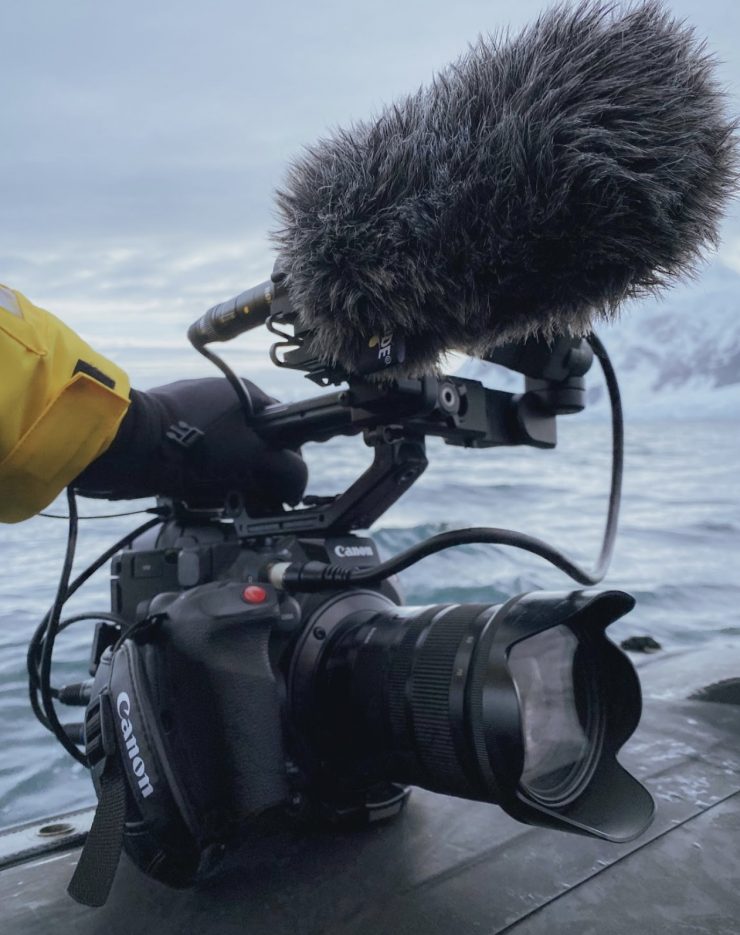
One of the other advantages to now shooting on full-frame is that one of the best EF lenses around, the Canon 85mm 1.4 IS, ends up with a very useful wider field of view. I was a long time fan of putting a 50mm 1.2 on the C300MKII to run around and shoot shallow depth of field overlay. With the full-frame C500 mark II, I can use the 85mm instead of the 50mm that I would use on an S35 sensor camera to achieve the same type or result with the added bonus of IS.
It’s a similar story with the 70-200, as the 70mm end of the lens feels like 43mm when you’re used to a Super 35mm sensor. It’s not wide enough to do a walk and talk with by any stretch but it did mean I had a bit more room to move when the subject was close.
FULL FRAME V SUPER 35
I did quickly discover that F1.4 on a full-frame sensor is VERY shallow so had to reel myself back in a bit there. Turns out it is in fact possible to go too far when it comes to blurring out everything except a razor-thin slice of focus. But on the whole, it was really refreshing to have the flexibility of a full-frame sensor.
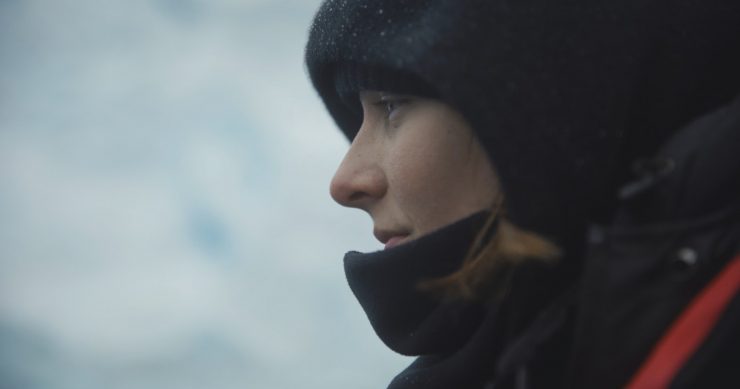
On full-frame, the 24mm end of the 24-70 felt like the perfect wide for almost every situation and it’s great to see the added layer of separation between the subject and the background you’re able to get, even on a ‘slow’ F2.8 lens. I especially noticed this on a number of the closeup shots I captured while Michaela was explaining something. You’re just able to draw attention to different parts of the face with focus and create an image that to me at least is a bit more engaging.
The other thing I really enjoyed was being able to switch sensor modes on the fly. For example, when I was filming Michaela in a zodiac and a whale suddenly appeared I knew swapping to the 70-200 would risk me losing the shot, so I quickly switched to Super 35mm to give the 70mm end of my lens better range and got something in the can before switching out to the long lens.
It would be amazing to be able to map the ‘sensor mode’ menu option to a button, or better yet have a button that cycles through the sensor modes, but unfortunately, that isn’t possible. It would be great to be able to crop in or come out and stay focused on the subject you’re chasing instead of going through a menu.
POWER & BODY
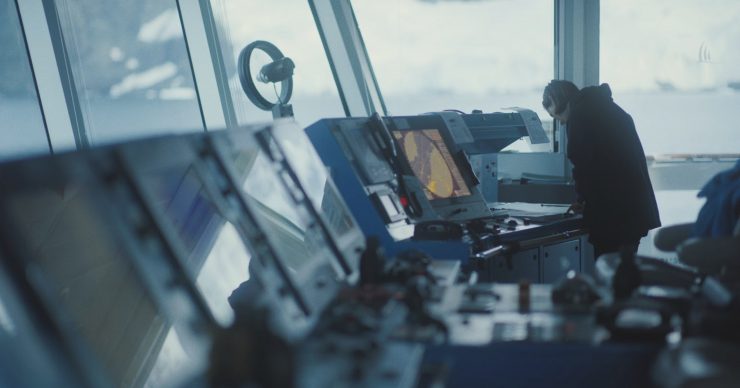
One major concern I had going into the shoot was power. The C500MKII seems primarily designed to use with Canon’s EU-V1 V-lock expansion plate, but at least for now, I prefer to shoot with BPA60s. The main reason for this is I use a Cinesaddle to cradle my camera close to my body rather than mounting it on a shoulder rig. It lets me keep the camera close to my body in a way that I like, and I can drop the camera down easily when needed and as i’m 6ft 6″. This stops me from having to squat all the time during interviews, but it can be a bit hard to use the camera this way if you are using the expansion unit, so keeping the C500MKII from getting too long was a more appealing option.
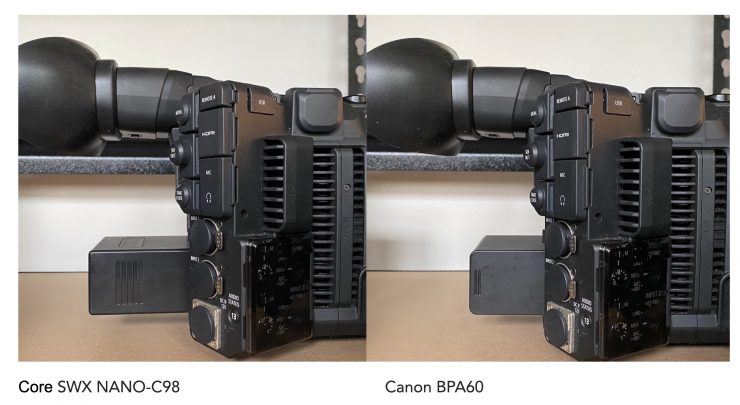
I had a stack of BPA60s already, but also bought a dual charger and a couple of Core 98 3rd party batteries to use as well to give myself the best chance of having enough power in the cold weather. The core batteries are a larger capacity than the Canon proprietary batteries (98wh v 90wh) so they stick out a fair way on the C500MKII, but they do have a few extra watts power so I thought it would be worth the trade-off.
The C500MKII’s battery life with a Canon BPA60 is about 110 minutes and I found I was getting close to that despite the cold. The Core 98 batteries initially display as 180 min on the screen which is great, but unfortunately, this reading isn’t accurate as the battery depletes faster than this. In the end, they gave just slightly better performance than a BPA60. I asked the local distributor for Core why this is the case and they relayed to me that the battery tries to calculate load when the camera isn’t recording and less power is being used, so that estimate will go depending on what the camera is doing. It’s not a big deal but I did find myself reaching for those batteries less as I just couldn’t rely on their estimates and that becomes pretty important as you get down to the low end of a battery. When you’ve only got 10 minutes of battery left you want to know it’s actually 10 minutes and not be trying to calculate how quickly it had been draining up until that point.
Something else that made a big difference to battery preservation was the camera’s boot time. It turns on in about 6 seconds which allowed me to safely power off more often than I would have previously and not miss much in the event of suddenly needing to boot back up.
I also opted to get the OLED rear EVF for the camera. I’ve found the C500MKII’s screen to be really bright and when combined with a sunhood it suits my needs well. However, having the backup option of looking through a rear EVF in the event of things being blindingly reflective in the snow was a good idea.
AUDIO
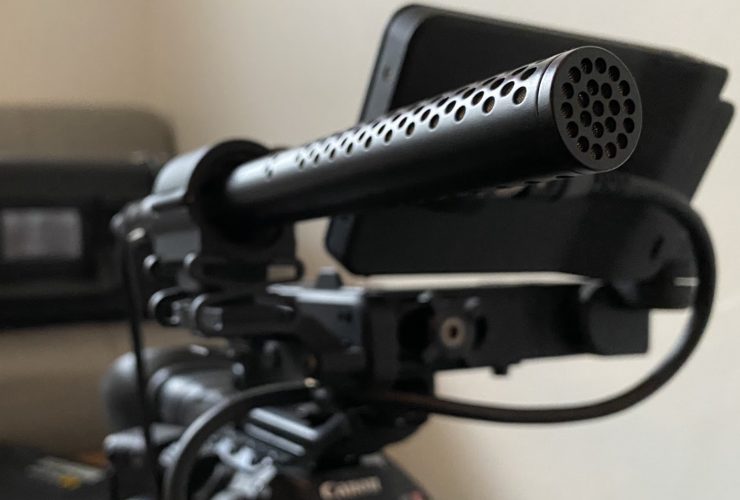
One of the main ways in which I’d hoped to bring a documentary feel to the project was through the use of sound. Having moments of actuality in the edit is really important to me and being prepared to capture things that are off the cuff is crucial. I recently picked up a Rode NTG5 to use as my onboard mic and it fundamentally changed the way that I think about capturing audio on shoots like this. I always radio mic a subject where I can but now having a directional shotgun mic with great range and a really clean signal has been fantastic.
In the final edit for Uncover Antarctica, we ended up using the shotgun mic over the radio mic for 90% of the audio grabs, including for the interview that formed the basis of the VO while we were sailing back. The NTG5 is a bit shorter than the shotgun mics I’ve previously used, and this helps a lot when it comes to keeping the windshield out of the wide shots, and the fact the mic is weatherproofed was a godsend when it came to filming the storms over the Drake Passage. Seeing how well this particular bit of kit has performed has led me to lean on it a lot more on recent projects.
WATER & WILDLIFE
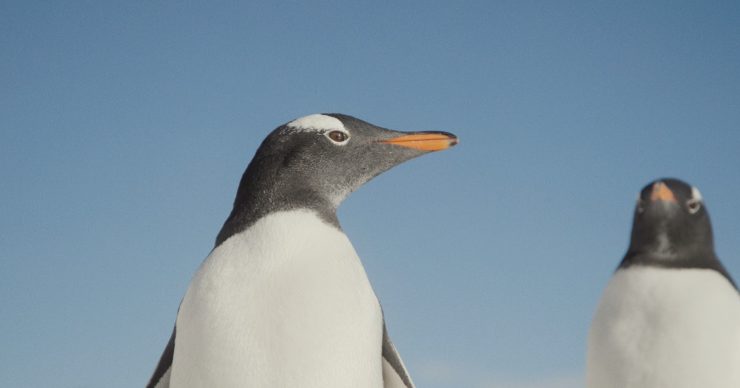
Be it in the form of rain, fog, snow, or ocean spray, trying to keep my kit away from the water was a major challenge in Antarctica. Most of the equipment I had with me was weatherproofed at least, but I was conscious that saltwater is kryptonite to cameras and I tried to do what I could to prevent it getting doused, which was especially tricky when filming from the zodiacs as I usually had one of my hands tied up holding onto the boat. I’ve never been a big fan of rain covers for cameras as I often find them pretty cumbersome and as far as I’m aware there aren’t any on the market for the C500MKII/C300MKII bodies. Instead, my go-to water protection method is a decent quality plastic poncho, cut as needed so that you have a hole for the lens, mic, and screen and then secured in place with a bongo tie.
Eventually, things will start to rip and you’ll have to replace it with another poncho so I usually pack a few of them, but I’ve found I’m far more likely to actually bring one with me on a shoot because it’s such an easy thing to tuck into a backpack. I also got into the habit of wiping the camera and lenses down after every landing or zodiac cruise with a damp towel to try and remove any saltwater residue that had made it past the poncho.
While the cold and wet are things that you can prepare for wildlife is another story. For both my piece and Michaela’s footage of penguins, seals and whales were always going to be a huge part selling the adventure and we weren’t sure what we’d find so late in February. I was fully prepared to belly crawl through the snow on my belly to sneak up on penguins with a long lens in order to not startle them, but I needn’t have worried. Animals in Antarctica are pretty well unbothered with humans and once we found a colony, my concern at not getting a good shot of a penguin was quickly replaced with concern not to stand on one by accident. Whales were especially interesting as different to the migratory ones I’ve seen in the past off the coast of Australia, the humpbacks we’d come across were just hanging out, often sleeping and in no particular rush to go anywhere.
FINAL THOUGHTS
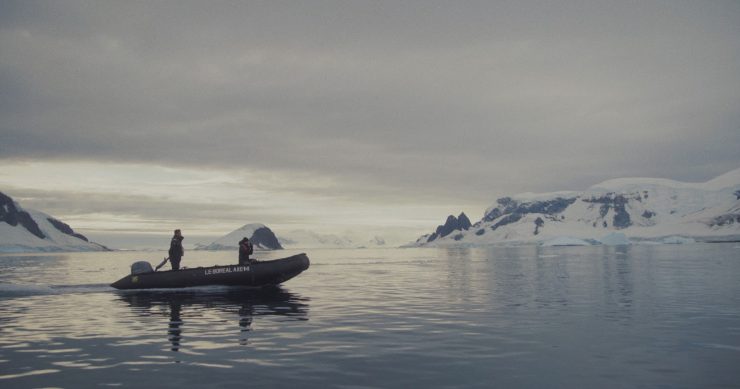
It was great to see how the C500 performs in less than ideal conditions and to have to build out a comprehensive kit with only a few bags. Having to be so on top of power has set me up well for other shoots since, as when I first got the camera I thought it would inevitably mean moving to a v-lock setup, but shooting with the low profile BPA60 -style setup is still very much an option provided you have enough bats. It was also interesting to see how full frame performs on a documentary-style shoot as I’d been across the benefits of it when it came to filming things like interviews, but on this project really appreciated the flexibility of flicking between full-frame wide and S35 long shots.
Now knowing what to expect from filming in Antarctica I’m itching to get back and have another crack at it. Unfortunately, even though it was just a few months ago when we set out, the world is now a very different place and I have no idea when international travel for this kind of project will be on the cards again. For now, I’m just very grateful to have had the chance to document such an incredible place and I hope we’ve managed to do it justice.





